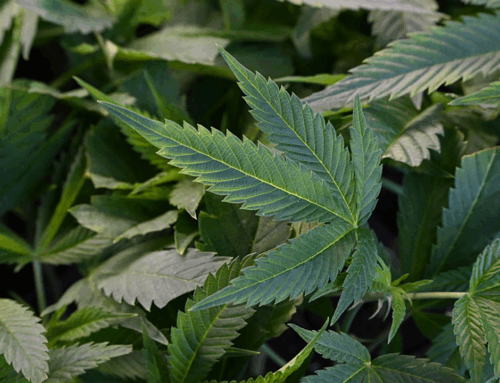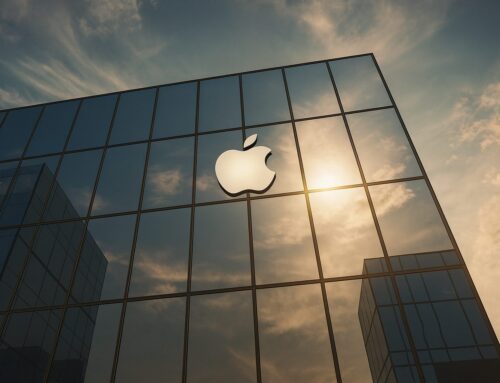To Protect Florida’s Environment, Conservation Is Cheaper Than Restoration
May 11, 2025

By Craig Pittman
Before last week, I’d never heard of the frosted flatwoods salamander. Now that I have, I think it’s kind of cool. It’s a wiggly little amphibian with black-and-white stripes, sort of like if you crossed a zebra with one of those lizards that race across your porch.
These salamanders used to live all over the South. Now they’ve vanished from most of the places where they once existed.
Fortunately, a group of biologists is trying to ensure the remaining few can hang on to what’s left of their Panhandle habitat of slash and longleaf pines.
To help the salamanders stick around, the biologists follow a practice called “headstarting.” It involves collecting salamander eggs from the wild, hatching them, raising them in places where they’re protected from predators, then releasing them once they’re larger and have a better chance of survival.
So far this year, they have released 1,204 of these little critters back into the wild. The most recent release was just two weeks ago. That’s a lot of salamanders wiggling through the pines.
I talked to the leader of this effort, J.J. Apodaca, a man with an impressively bushy beard and a doctorate in biology. He’s the executive director of the Amphibian and Reptile Conservancy, or ARC for short. Any resemblance between this ARC and that ark of Noah’s saving two of every species is, I think, entirely intentional.
I asked him why his organization is putting in all this work to save a little salamander that hardly any human knows about.
“We have to keep these species around as part of the ecosystem,” Apodaca told me. “They have just as much a right to exist as we do.”
The salamanders eat earthworms and spiders and are themselves food for larger animals such as armadillos, he said. I don’t plan to lead everyone in singing “The Circle of Life” from The Lion King, but you can see what would happen to the food chain if the all the salamanders called in sick.
That’s why the ARC biologists get down on their hands and knees to look for the salamanders’ small, translucent eggs in shallow wetlands near Tallahassee, the home of a LOT of slimy creatures.
Apodaca conceded that the way they’re doing this “would have been considered a radical approach 20 years ago. But we have to intervene in a more radical way to save biodiversity.”
His organization is spending $300,000 a year to save the frosted salamander and its habitat, he said. When I asked if it would have been cheaper to save the species and its home before it became nearly extinct, he said, “Oh, yeah!” in a tone even more enthusiastic than Kool-Aid Man.
When it comes to conservation versus restoration, conservation is “vastly more efficient,” he said.
A painful degree
Restoration projects like the one involving the frosted flatwoods salamander are a major industry all over Florida. If I were Ethel Merman, this is where I’d start belting out, “There’s no business like restoration business!”
The biggest example is the Everglades, which has become the largest and most expensive environmental restoration project in human history.
State and federal agencies are spending billions on that one, a project that has already lasted for 25 years and still has a loooong way to go.
But it had to be done, explained Eve Samples, executive director of Friends of the Everglades.
“We’ve lost more than half the historic Everglades,” said Samples. “The loss created a huge burden on the public and policymakers to try to restore them.”
The Everglades were once regarded as an obstacle to progress, development, and farming, all of which conspired to get rid of it.
But the River of Grass turned out to be important for the South Florida water supply, the fishing industry, and flood control. That’s why we’re now spending so much tax money on rebuilding what’s left.
Despite the clear lesson of the Everglades, our shortsighted leaders keep allowing the same damage or destruction of other precious parcels of Florida’s ecosystems, Samples said.
“There’s a painful degree of irony in this,” Samples told me. “We don’t have to keep repeating the same mistakes.”
The tipping point
Another area where lots of our tax dollars are being spent on restoration is the Indian River Lagoon.
The Indian River Lagoon in real life (or “IRL IRL,” if you’re from the texting generation) was once an amazing estuary full of a lot of marine life. Now it’s become a graveyard for malnourished manatees.
This happened because the Department of Environmental Protection allowed so much pollution to flow into the lagoon that it stimulated toxic algae blooms. The blooms then killed off the seagrass that the manatees both eat and spread.
As early as 2010, the Save the Manatee Club was warning state officials that the lagoon was going downhill fast, said Pat Rose, the club’s longtime executive director.
“We were warning them that the lagoon would soon reach a tipping point and collapse,” Rose told me.
Instead of stepping up efforts to stop the pollution and save the lagoon, government officials let the decline continue until, as had been predicted, the ecosystem collapsed. With nothing to eat, hundreds of manatees starved to death.
State biologists grew so desperate, they tried tossing donated lettuce out in the water, something that had never been tried before.
Now we taxpayers are footing the bill for trying to bring back the seagrass in the lagoon and stop the pollution from messing it up. But Rose said the effort is taking so long — at least 15 years — that he’s worried there will be a second collapse and even more manatees will starve.
Just two months ago, Gov. Ron DeSantis announced the state would spend $100 million on trying to fix what’s broken in the lagoon. He talked about why the lagoon is important.
“This is the most biologically diverse estuary in all of North America, and it’s a key economic driver for the region and the state,” DeSantis said.
Given how important that waterway is, wouldn’t it have been smarter — and cheaper — for the DEP to do its job and prevent the pollution in the first place?
“No disagreement there,” Rose said.
The most polluted lake
Among the experts I called for examples of this phenomenon was Clay Henderson, a longtime preservation advocate who literally wrote the book on the subject (“Forces of Nature”). He mentioned Lake Apopka, once considered the most reliable bass-fishing lake in the South.
“There were over 20 fish camps around the lake,” Jim Peterson of the St. Johns River Water Management District told Spectrum News 13 last year. “They had lodging, they rented boats, they sold bait, they had entertainment. It was a place to come visit.”
But then farmers were allowed to convert 20,000 acres of marshes on the lake’s north shore into dry land for growing row crops.
“They did a great job of growing … but it added a lot of pollution to Lake Apopka,” Peterson told the TV station.
The pollution fueled algae blooms that killed off all the aquatic vegetation (sound familiar?). As a result, the bass fishing declined. Lake Apopka became known as the most polluted lake in the state.
 Florida started working on fixing the lake in the 1980s. In 1996, the Legislature approved buying those farms and converting them back into wetlands to help clean up the lake.
Florida started working on fixing the lake in the 1980s. In 1996, the Legislature approved buying those farms and converting them back into wetlands to help clean up the lake.
Meanwhile, the water district waded into removing the pollutants from the lake. By 2024, the water had become clear enough that 95% of the lake’s aquatic vegetation returned.
“The restoration of former muck farms has transformed this area into a haven for wildlife and a jewel for the recreating public,” the water district’s website boasts.
To attract anglers back to the lake, the Florida Fish and Wildlife Conservation Commission is stocking it with 1 million largemouth bass.
The cost to the taxpayers for all this: $200 million, spent over four decades.
“Much of the restoration cost was to remediate hazardous waste,” Henderson told me. “What I’ve learned over 40 years in conservation is it is always cheaper to buy conservation lands than to restore damaged ecosystems.”
Stay saved
Talking to people about these restoration projects reminded me of a scene from one of my kids’ favorite animated movies, “The Incredibles.”
At the start of the movie, several superheroes sit for interviews. One of them, named Mr. Incredible, complains, “No matter how many times you save the world, it always manages to get back in jeopardy again. Sometimes I just want it to stay saved, you know, for a little bit?”
We here in Florida know that feeling.
All over the state, we’ve put in strenuous efforts to save what’s best about our state. A lot of acreage has been preserved as state parks and state forests, not to mention the more recent Florida Wildlife Corridor.
The popularity of those programs shows very clearly that people want that land to stay that way — preserved in a natural state.
Yet we’ve also seen repeated attempts at breaching the wall around the preserves, to un-save what’s been saved.
Turns out there are lots of misguided people and politicians who want to build golf courses and big hotels in the parks and roads through the forests and preserves.
“We fight to protect something,” said Cris Costello of the Sierra Club, “and then we have to be vigilant about protecting it from further threats.”
As a result, the Legislature has just passed a bill to block any further attempt at building golf courses in state parks, something you would think would be obvious. Yet we’ve now had two governors in a row whose definition of greenspace includes putting greens.
We’ll find out soon whether our sitting Duffer-in-Chief, Gov. DeSantis, will sign this bill into law the way he says he will. It’s an interesting situation, since the bill is a direct rebuke to his deeply unpopular anti-park moves from last summer.
Fixing Florida
It never ceases to amaze me how often our elected officials will let developers and other profiteers damage a prime piece of our paradise, make a quick buck, and skedaddle.
Then, and only then, do they figure out that something is broken — usually after a hurricane or some other disaster highlights the flaws. As a result, it’s us taxpayers who usually wind up footing the bill.
“Even though the Florida Constitution requires those who cause the pollution to pay the cost of restoration, it’s the taxpayers who pay for the clean-up,” Henderson pointed out.
Thus, let me offer a suggestion that’s no more radical than “headstarting” a batch of frosted flatwoods salamanders.
Whenever a developer comes along with grand plans for wiping out wetlands or paving over some other parcel that will hurt the environment, their first step is frequently to ask for the local government to change the zoning on that property.
In other words, they want to build where they shouldn’t. I say, if they want to play that way, they should pay for the privilege. I think the local government should require them to put up a bond.
You can call it an impact fee, like the fees that make a developer pay in advance for the new roads, schools, libraries, fire stations, and sewer connections.
Or you could call it something that better describes its purpose: The cost of fixing Florida.
My proposal would be to require every developer who gets a zoning change to post a bond of at least $1 million for every 100 homes to be built.
The bond would need to stay valid for at least a decade. If, during that time, we discover that the houses were built in the wrong place, or are causing problems for the neighbors, or have some other flaw, then the bond could cover the cost of fixing the problem.
That way the taxpayers don’t have to bear the burden of repairs. Instead, any money would come out of the pockets of the people who actually caused the problem.
I think we need to hold these rascals to account for the damage they do, because, so far, they’ve proven to be slipperier than a whole herd of frosted salamanders.
![]()
 Craig Pittman is a native Floridian. In 30 years at the Tampa Bay Times, he won numerous state and national awards for his environmental reporting. He is the author of six books, including the New York Times bestseller Oh, Florida! How America’s Weirdest State Influences the Rest of the Country, which won a gold medal from the Florida Book Awards. His latest, published in 2021, is The State You’re In: Florida Men, Florida Women, and Other Wildlife. In 2020 the Florida Heritage Book Festival named him a Florida Literary Legend. Craig is co-host of the “Welcome to Florida” podcast. He lives in St. Petersburg with his wife and children.
Craig Pittman is a native Floridian. In 30 years at the Tampa Bay Times, he won numerous state and national awards for his environmental reporting. He is the author of six books, including the New York Times bestseller Oh, Florida! How America’s Weirdest State Influences the Rest of the Country, which won a gold medal from the Florida Book Awards. His latest, published in 2021, is The State You’re In: Florida Men, Florida Women, and Other Wildlife. In 2020 the Florida Heritage Book Festival named him a Florida Literary Legend. Craig is co-host of the “Welcome to Florida” podcast. He lives in St. Petersburg with his wife and children.
Search
RECENT PRESS RELEASES
Related Post





